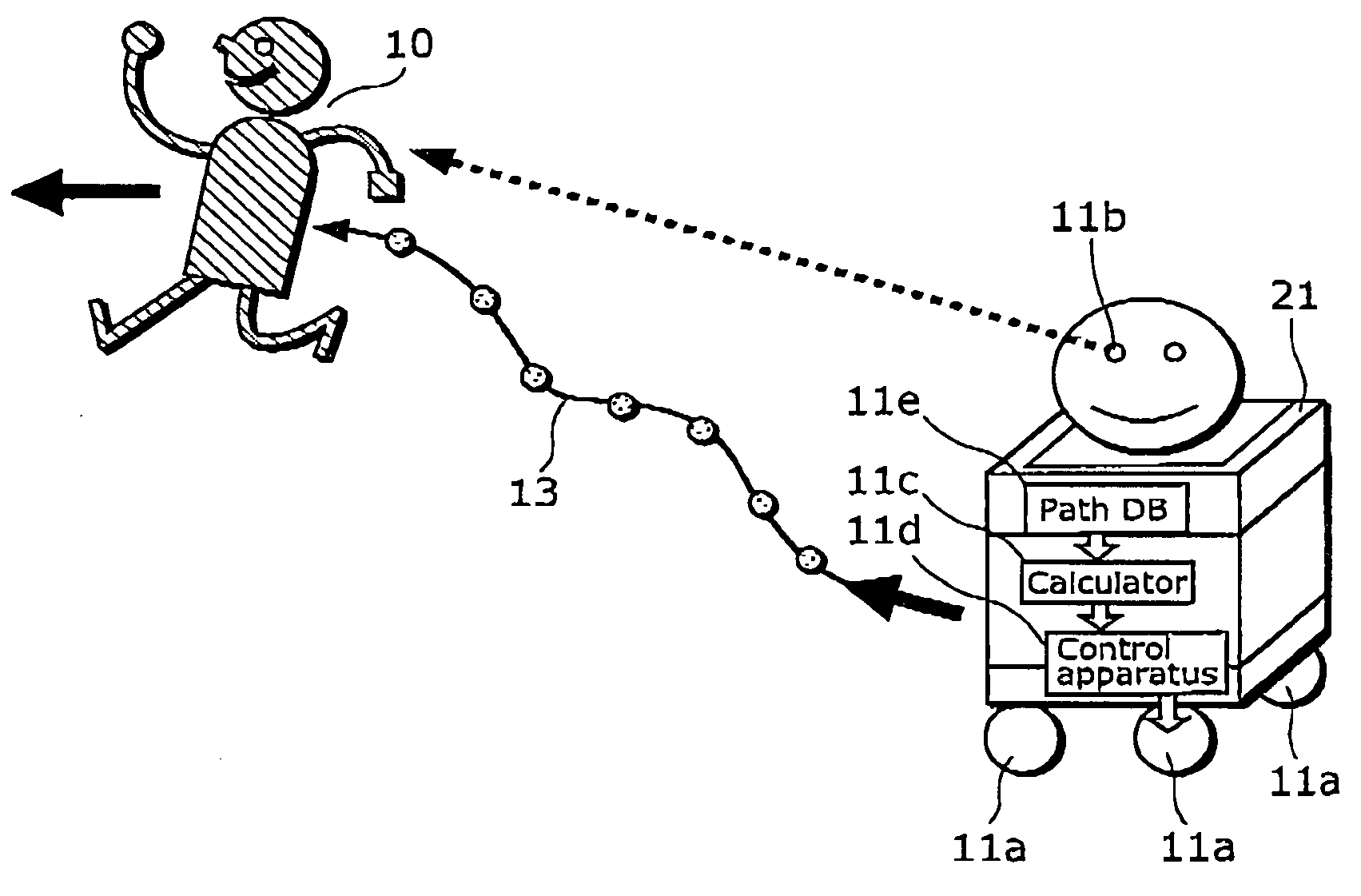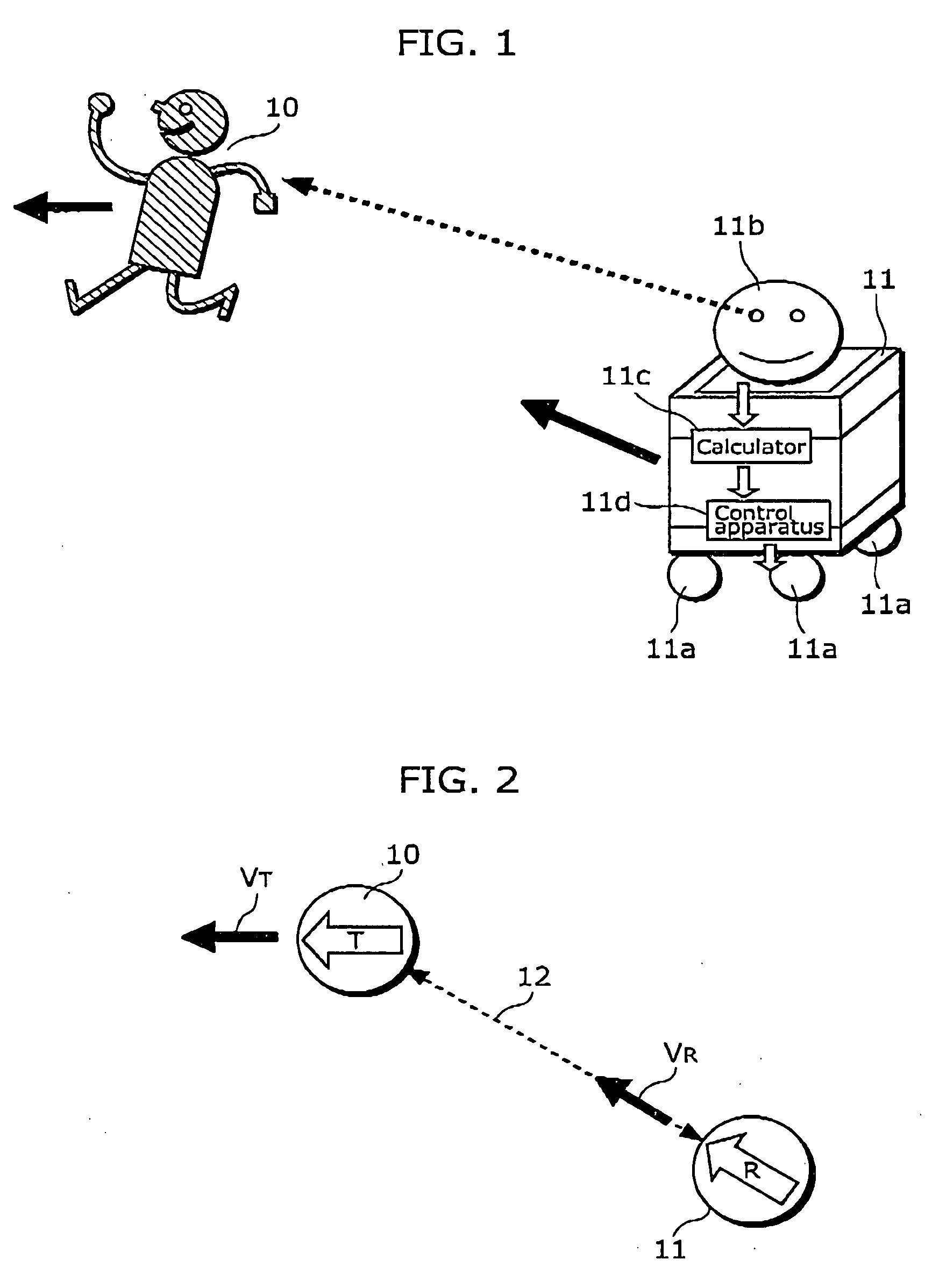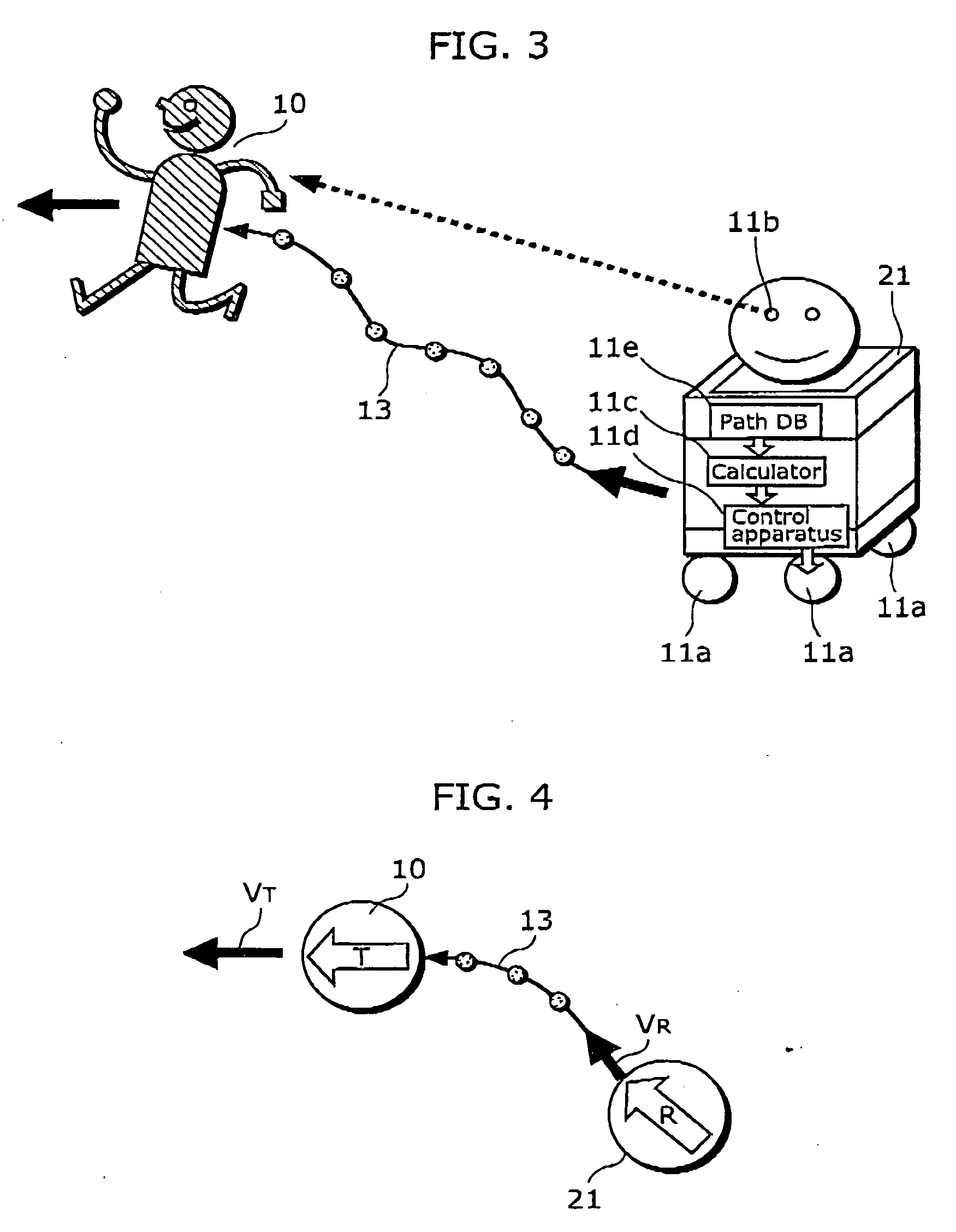Method of controlling movement of mobile robot
- Summary
- Abstract
- Description
- Claims
- Application Information
AI Technical Summary
Benefits of technology
Problems solved by technology
Method used
Image
Examples
first embodiment
[0074]FIG. 9 is a diagram showing a structure of a mobile robot according to a first embodiment of the present invention. FIG. 10 is a diagram for explaining an accompanying method of the mobile robot according to the first embodiment of the present invention.
[0075] As shown in FIG. 9, the mobile robot 2 is a robot which moves along with an accompanied target 1, and includes: a robot body 2a; mobile mechanisms 2b such as wheels for at least moving the robot body 2a; a measurement apparatus 2c which measures a position and a velocity of the accompanied target 1; a measurement apparatus 2d which measures a position and a velocity of the robot body 2a itself; a calculator 2f which calculates a path for accompanying the accompanied target 1 based on the measurement results by the measurement apparatuses 2c and 2d; a control apparatus 2g which controls the mobile mechanisms 2b so as to move along the path calculated by the calculator 2f; and a detecting apparatus 2e which detects the ac...
second embodiment
[0123]FIG. 23 is a diagram showing a structure of a mobile robot according to the second embodiment of the present invention.
[0124]FIG. 24 to FIG. 29 are diagrams for explaining a change of an accompanying method due to a surrounding environment and the like in the mobile robot shown in FIG. 23. FIG. 24 and FIG. 25 are diagrams showing an example of changing a positional relationship by detecting an obstacle. FIG. 26 and FIG. 27 are diagrams showing an example of changing a positional relationship depending on a congestion degree of the surrounding environment. Further, FIG. 28 and FIG. 29 are diagrams showing an example of changing a positional relationship depending on a velocity of the accompanied target.
[0125] The structure of the mobile robot 22 according to the second embodiment of the present invention shown in FIG. 23 includes a detecting apparatus 2h which detects a condition of a surrounding environment around the accompanied target 1 and the mobile robot 2, in addition ...
PUM
 Login to View More
Login to View More Abstract
Description
Claims
Application Information
 Login to View More
Login to View More - R&D
- Intellectual Property
- Life Sciences
- Materials
- Tech Scout
- Unparalleled Data Quality
- Higher Quality Content
- 60% Fewer Hallucinations
Browse by: Latest US Patents, China's latest patents, Technical Efficacy Thesaurus, Application Domain, Technology Topic, Popular Technical Reports.
© 2025 PatSnap. All rights reserved.Legal|Privacy policy|Modern Slavery Act Transparency Statement|Sitemap|About US| Contact US: help@patsnap.com



